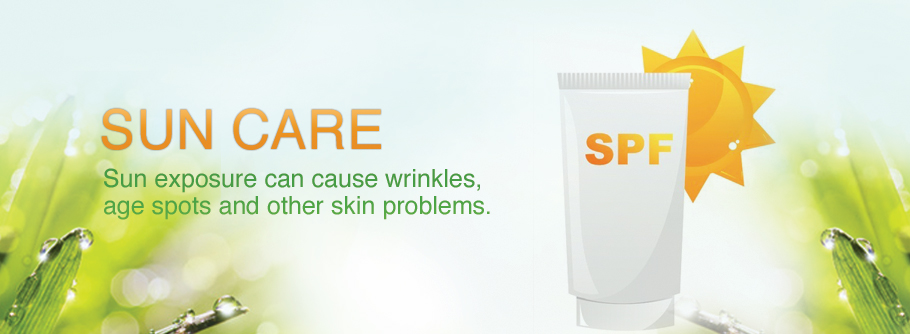
Healthy & Beauty Tips
Beauty Tips
Skincare: Suncare
Why do you need protection from the sun?
Everyone loves the sun but do you know that prolonged exposure of skin to the sun may cause skin damage & are the top cause of skin cancer.
Sun exposure can cause wrinkles, age spots and other skin problems.
That is why everyone should use sunblock/sunscreen daily to protect skin from the harmful effects of the sun.
Choosing the Right Sunscreen
A good sunscreen should be broad spectrum, which means it protects against the sun's UVA & UVB rays with a sun protection factor (SPF) of at least 15.
How do you know whether the product is broad spectrum?
Read the product label. If it has indication for SPF and PA or says 'broad spectrum' that means it gives protection against both UVA & UVB rays.
What is the Difference between UVA & UVB radiation?
Sunlight is composed of several different types of radiation, including Ultra Violet (UV) radiation UV radiation, comprise of UVA, UVB & UVC types, and they cause different types of damage to skin.
UVA rays are always present during the day, regardless of the season or weather. Since they are able to penetrate deeper into surface of skin, they are mostly responsible for signs of premature aging such as pigmentation, wrinkles, leathery skin and causes skin cancer.
UVB radiation causes sunburn and is responsible for photoageing, skin cancer & eye damage. These rays are more intense during summer or in hotter months.
What is SPF?
SPF value gives you ranking for protection against UVB rays. It gives you the degree of protection against UVB compared to when nothing is applied on the skin. For example, SPF 30 means that the UV protection is 30 times more effective against the sun than when nothing is applied. So if you burn in 300 minutes with a sunscreen and 10 minutes without a sunscreen, this is 300/10 = 30. So the sunscreen will have an SPF of 30.
What is PA?
PA stands for “Protection Grade of UV-A”. It refers to the amount of protection the sunscreen offers from the UVA rays. PA+ means the product has “protection efficacy” with PA ++ and PA+++ indicating stronger protection efficacies.
People with different skin types may require different types of sunscreen. However as rule of thumb, you may use an oil-free, non-comedogenic sunscreen with SPF & PA level suitable for the length of sun exposure you will experience in a day for daily use.
If you are outside only for minutes at a time- a broad-spectrum sunblock with SPF 15 is usually sufficient. For extended, intense exposure, a broad-spectrum, water-resistant sunscreen with an SPF 30 or higher may be more suitable.
How to Use
Sunblock should always be the last step of your morning skin care routine. Put on sunblock after applying moisturiser to skin.
No matter what the SPF is, you should reapply sunscreen every 2 hours. This is because sweating, swimming, rubbing of clothes, towelling dry, exercise and touching our skin will all remove sunscreen. If not reapplied, you may have unprotected areas which will be exposed to the sun.
Self-care
1. Limit time in the sun, especially between 10am-3pm when sun's rays are most harmful.
2. Wear a hat, protective clothing (shirts with long sleeves & long pants) for extra
protection & remember to seek shade
3. Apply a broad-spectrum sunscreen to all exposed areas of skin at least 20 minutes
before heading outside
References:
http://www.webmd.com/beauty/sun/sun-safety-tips
http://www.skincancer.org/prevention/sun-protection/sunscreen/choosing
http://www.nhs.uk/Livewell/skin/Pages/Sunsafe.aspx
http://www.kao.com/sg/binkanhada/uv_03_01.html



